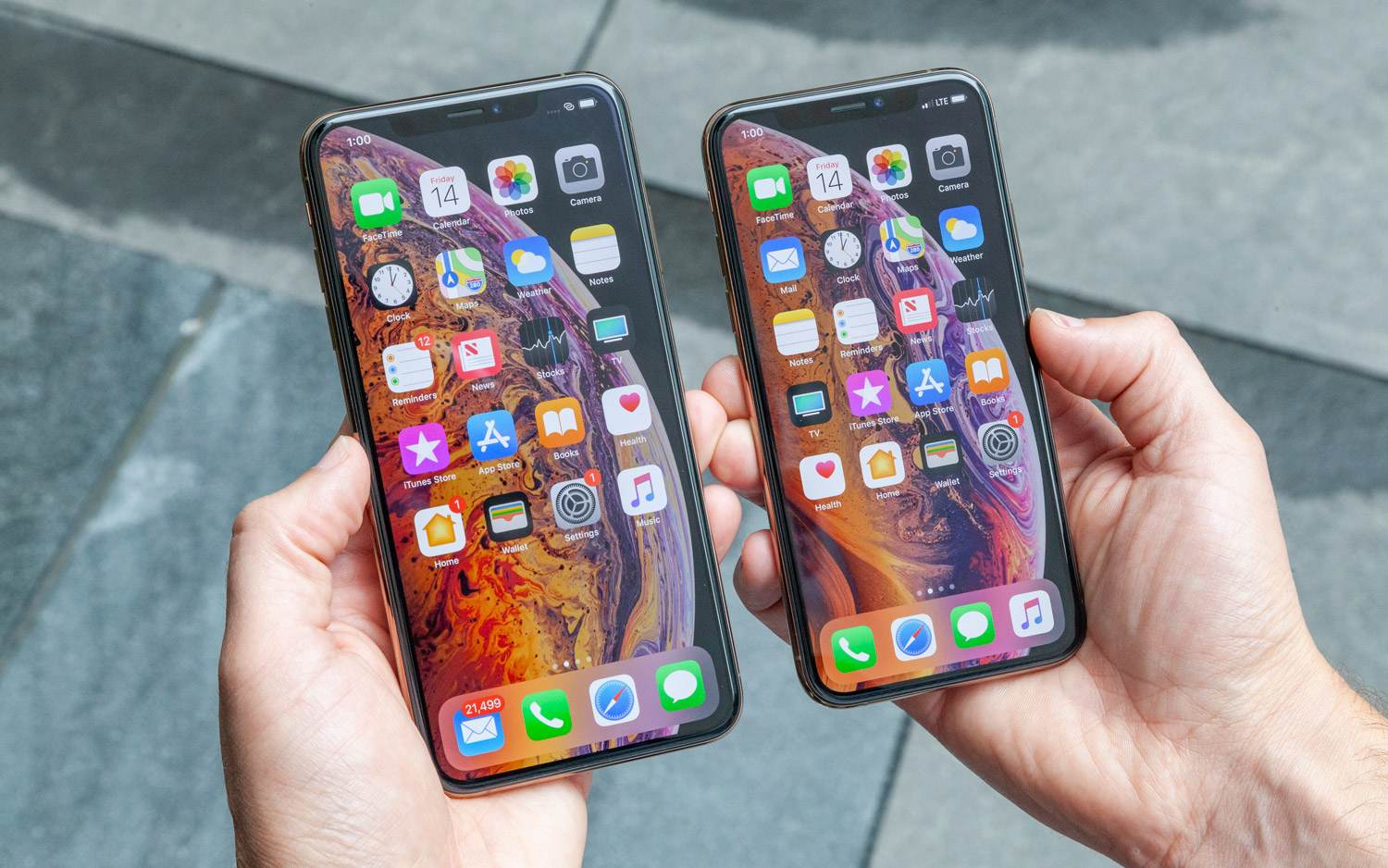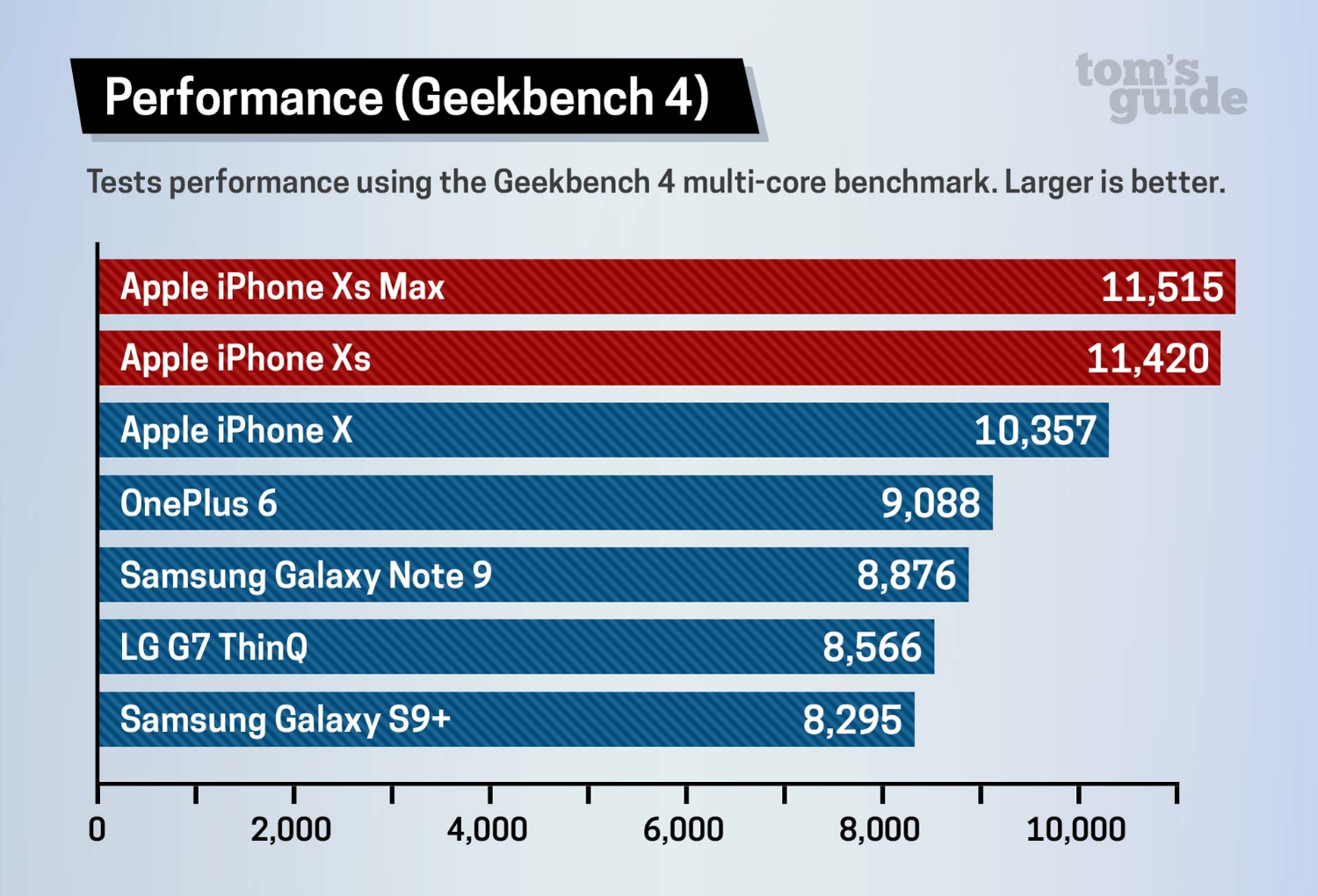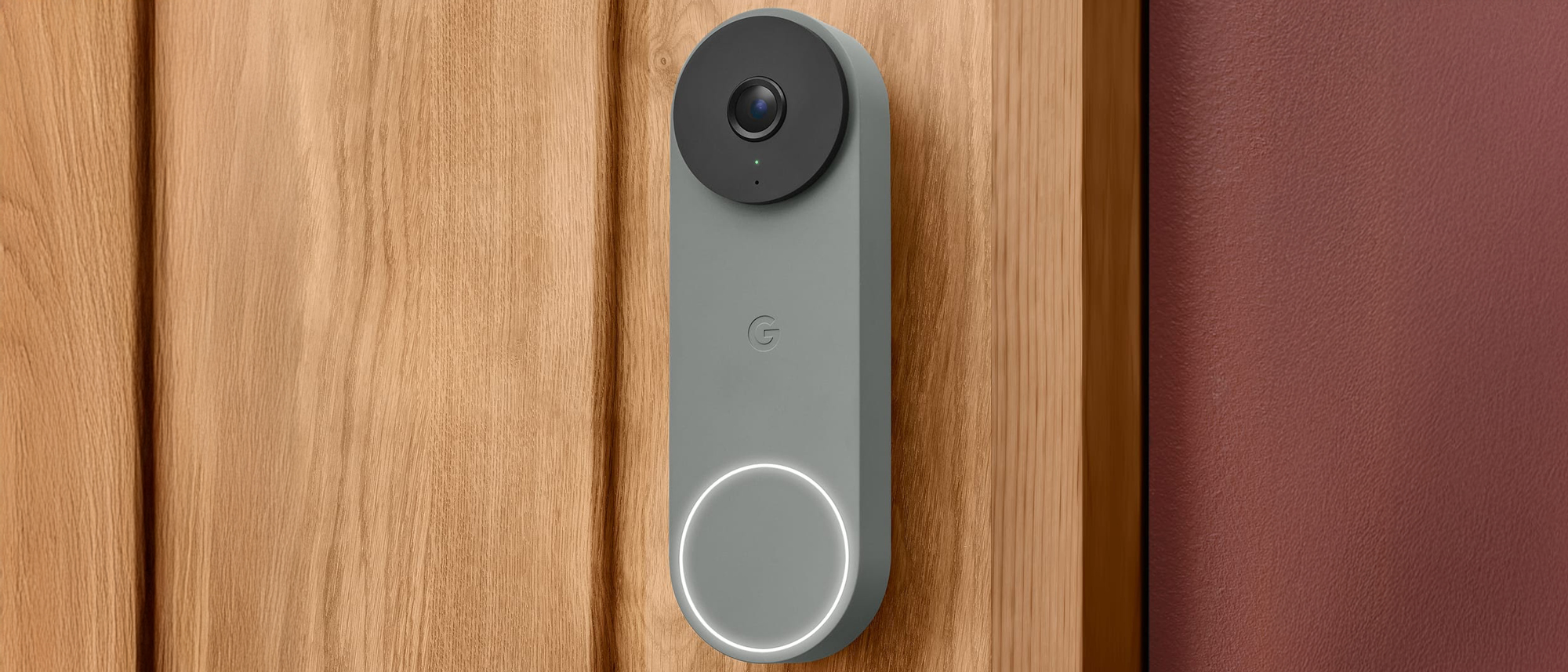iPhone XS and XS Max Benchmarked: World's Fastest Phones (Again)
The A12 Bionic processor inside the iPhone Xs and iPhone Xs isn't the leap that the A11 was, but it still helps Apple keep the performance crown.
The world's first 7-nanometer processor in a phone isn't the breakthrough that the A11 Bionic was regarding raw performance, but it still runs circles around Android phones powered by Qualcomm's Snapdragon 845 chip in several world real-world tests and synthetic benchmarks.

The new hexa-core chip inside the iPhone XS and XS Max packs two performance cores that are designed to be 15 percent faster than its predecessor, along with four high-efficiency cores that use up to 50 percent less power, according to the company. On top of that is a four-core GPU that Apple says is up to 50 percent faster.
Here are the results so far, based on our testing. If there are any tests you would like us to run in addition to what you see here, please let us know in the comments.
Geekbench 4 (Multicore)
| iPhone XS Max | 11,515 |
| iPhone XS | 11,420 |
| iPhone X | 10,357 |
| OnePlus 6 | 9,088 |
| Galaxy Note 9 | 8,876 |
| LG G7 ThinQ | 8,566 |
| Galaxy S9+ | 8,295 |
Geekbench 4 is a benchmark that measures overall performance, and no other phone comes close to Apple's new handsets on this test. The iPhone Xs notched 11,420, and the iPhone Xs Max hit 11,515. The older iPhone X scored 10,357, so that's about an 11 percent improvement.

There's a lot more distance between the new iPhones and Android flagships. The fastest Android phone around, the OnePlus 6, scored 9,088 on Geekbench 4 with its 8GB of RAM, while the Galaxy Note 9 reached 8,876.
Video Editing (Transcode 2-minute 4K clip to 1080p)
| iPhone XS Max | 39 seconds |
| iPhone XS | 39 seconds |
| iPhone X | 43 seconds |
| Galaxy S9+ | 2:32 |
| LG G7 ThinQ | 3:16 |
| OnePlus 6 | 3:45 |
| Galaxy Note 9 | N/A* |
*Doesn't support Adobe Clips app
To test real-world performance, we use the Adobe Premiere Clips app to transcode a 2-minute 4K video to 1080p. The iPhone X was miles ahead last year with a time of just 42 seconds. This time around, the iPhone XS and iPhone XS Max knocked it down further to 39 seconds.
Get instant access to breaking news, the hottest reviews, great deals and helpful tips.
MORE: iPhone Xs Max and iPhone Xs Review: This Is Obscene
The Galaxy S9+ took 2 minutes and 32 seconds to complete the task, and that's the fastest we've seen from an Android phone. The OnePlus 6 finished in 3:45, and the LG G7 ThinQ took 3:16.
App Open Times (Lower is better)
| Fortnite | Pokémon Go | Asphalt 9 | Tekken | |
| iPhone XS Max | 20.8 seconds | 4.9 seconds | 6.17 seconds | 18.76 seconds |
| iPhone X | 26 seconds | 7.2 seconds | 10 seconds | 19.7 seconds |
| Galaxy Note 9 | 35 seconds | 7.2 seconds | 9.1 seconds | 29.38 seconds |
One good way to measure real-world performance is to see how long it takes for a phone to load demanding apps. Because the phones have the same processor for this round, we just used the iPhone Xs Max and put it up against the iPhone X and the Galaxy Note 9.
The iPhone XS Max was faster every time, including a 15-second victory in Fortnite over the Note 9 and 3-second win in Asphalt 9. The phones were closer in Pokémon Go but the iPhone XS Max still came out on top.
3DMark Slingshot Extreme (Graphics)
| OnePlus 6 | 5,124 |
| Galaxy Note 9 | 4,639 |
| Galaxy S9+ | 4,634 |
| iPhone XS Max | 4,339 |
| iPhone XS | 4,244 |
| LG G7 ThinQ | 4,201 |
Here's one test where the new iPhones fell behind. 3DMark Slingshot Extreme measures graphics performance by evaluating everything from rendering to volumetric lighting. The OnePlus 6 fared best in this test with a score of 5,124, followed by the Galaxy Note 9 and S9+. The iPhone XS Max and iPhone X finished behind those handsets.
GFXBench 5.0/Metal
| Aztec Ruins | Car Chase | |
| iPhone XS Max | 1,604.7 frames | 1,744.44 frames |
| iPhone XS | 1,774.1 frames | 1,674.3 frames |
| Galaxy Note 9 | 851.7 frames | 1,103 frames |
| Galaxy S9+ | 1,339 frames | 1,783 frames |
The new iPhones turned the tables on the GFXBench 5, which is longer and more intense than 3DMark Slingshot Extreme. The Aztec Ruins scene, for example, is highly detailed with complex graphics designed to stress a phone.
The iPhone XS Max achieved 1,604.7 frames on the Aztec Ruins portion of the test, and 1,744.44 frames in the Car Chase test. The Note 9 was far behind at 851.7 and 1,103 frames, respectively. However, the Galaxy S9+ edged past the iPhone XS Max on this test.
Bottom Line
Based on our testing, the A12 Bionic processor inside the iPhone XS and iPhone XS Max make these the fastest phones you can buy. Android phones powered by Qualcomm's Snapdragon 845 chip are speedy but they are a step behind Apple's phones. We plan on conducting more tests, including evaluating LTE speeds on the new iPhones versus other phones, and will add the results to this report.
Credit: Tom's Guide
Mark Spoonauer is the global editor in chief of Tom's Guide and has covered technology for over 20 years. In addition to overseeing the direction of Tom's Guide, Mark specializes in covering all things mobile, having reviewed dozens of smartphones and other gadgets. He has spoken at key industry events and appears regularly on TV to discuss the latest trends, including Cheddar, Fox Business and other outlets. Mark was previously editor in chief of Laptop Mag, and his work has appeared in Wired, Popular Science and Inc. Follow him on Twitter at @mspoonauer.
-
Ronald_31 Silly. because it makes the iPhone easier to use, less of an interference to one's stream of thought. Every moment of delay is a potential moment for a thought to be lost, train of thought to be derailed, effort to be abandoned. Buy Android and don't just lose more of your privacy but take more timeouts for coffee, not to mention waste more time tweaking the endlessly customizable UI.Reply -
mig6220 When the screen resolution is that low, it frees up power to do other things.Reply
In other news... -
mig6220 and "endlessly customizable UI's are a waste of time.."? Wow.Reply
99 percent of what every human does on earth is a smartphone is a waste of time. Smh -
nunomiguelnobre The Geekbench scores reported here are considerably higher than the ones on browser.geekbench.com and elsewhere on the web... Why is that?Reply -
bobdupuu Reply21331801 said:Silly. because it makes the iPhone easier to use, less of an interference to one's stream of thought. Every moment of delay is a potential moment for a thought to be lost, train of thought to be derailed, effort to be abandoned. Buy Android and don't just lose more of your privacy but take more timeouts for coffee, not to mention waste more time tweaking the endlessly customizable UI.
-
bobdupuu Not sure what phones you have been using, but I am not aware of any discernible delays that would be revealed by the Geekbench comparisons. My thoughts do not come and go with nanosecond speed. I AM more aware of delays due to data transfer speeds. Let's see a more realistic real-world comparison of that. I am not a gamer and I do not do photo editing on my phone, so I do not have any first hand experience to offer with those. It's all about bragging rights.Reply -
bluesurfcapecod The larger iPhone XS Max has a bigger battery to match its size, with a capacity of 3,174mAh.Reply

